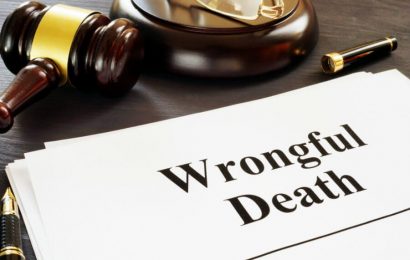Benefits of Petitioning For Chapter 13 Insolvency
The public patterns of insolvency documenting uncover that roughly 65% of the time individuals record for Chapter 7 liquidation. Furthermore Chapter 7 liquidation without a doubt enjoys a few benefits. Probably the most unmistakable benefits are that Chapter 7 ordinarily takes under a half year and there are no drawn out responsibilities. Nonetheless, this isn’t to imply that that petitioning for Chapter 7 is consistently the best arrangement. There are a few benefits to petitioning for Chapter 13 insolvency. Notwithstanding the similar benefits, you probably won’t have the choice of petitioning for Chapter 7 liquidation.
One justification behind recording under Chapter 13 is the law probably won’t bear the cost of you a choice. The Liquidation Misuse Avoidance and Shopper Assurance Demonstration of 2005 uses the “signifies test” to decide whether you get an excessive amount of cash-flow to petition for Chapter 7 insolvency. For instance, as of Walk 15, 2010, the middle pay for a group of four living in Kansas is $72,352. Assuming you make more than the middle pay, there is an assumption against permitting you to document under Chapter 7. You should document a Chapter 13 liquidation if: (1) your pay surpasses the middle pay; and (2) your extra cash permits you to pay your unstable banks essentially $10,950 throughout the span of five years. Nonetheless, that isn’t really something awful. Chapter 13 offers a few strong benefits, and it very well may be for your potential benefit to petition for Chapter 13 insolvency regardless of whether you can meet all requirements for Chapter 7 liquidation. The following are a portion of the benefits to petitioning for Chapter 13 insolvency.
Advantage 1: Stop Dispossession and Repossession
Both Chapter 7 and Chapter 13 at first stop a dispossession or repossession through the programmed stay. Notwithstanding, Chapter 7 just briefly stops an abandonment while Chapter 13 provides you with the choice of making up for lost time with your late installments by means of a long term reimbursement plan. At the core of a Chapter 13 insolvency is a three-or five-year reimbursement plan that permits you make up for lost time with your missed installments. You can take care of your missed installments over the length of your reimbursement plan while keeping your home. Also as long as you stay current with your installment plan, you will actually want to keep your home.
Advantage 2: Lose the Subsequent Home loan
In this insane economy, heaps of individuals end up in the unenviable place of being “topsy turvy” on their home. On the off chance that your house is worth less, or equivalent to what you owe on your first home loan, petitioning for Chapter 13 can change your second home loan into a debt without collateral. This is a significant differentiation on the grounds that as an unstable bank you won’t need to reimburse everything you owe on your subsequent home loan. At times, individuals in a real sense pay pennies on the dollar toward their subsequent home loan. This bears a two-overlap advantage for you. To start with, it will bring down the sum you are paying on your home. Second, your subsequent home loan will be released on the off chance that you complete your reimbursement plan.
Advantage 3: Pack Down
The pack down choice can be truly helpful assuming you are “topsy turvy” on a vehicle that you bought over 910 days before you petitioned for Chapter 13. Expecting your vehicle advance qualifies, and you are “topsy turvy” on your advance, you can compel your loan boss to diminish the sum you owe to your vehicle’s present worth. Generally, you will propose to pay your vehicle’s present worth throughout the span of your Chapter 13 reimbursement plan versus what you as of now owe. This choice alone can save you huge number of dollars.
Advantage 4: Lessen Interest on Your Got Credits
Chapter 13 permits you to decrease the financing costs you pay on your got credits. The one special case for this is you are not permitted to bring down the loan fee on your home loan. For instance, in the event that you are paying a financing cost of 20% on an advance for your home furnishings, petitioning for Chapter 13 permits you to slice your rate to the superb rate in addition to 1-3%, contingent upon your case. This can bring about you setting aside a great deal of cash.
Advantage 5: Pay Yourself An opportunity to Take care of A Non-Dischargeable Advance.
Sadly, some obligation can’t be released and endure insolvency. For example, understudy loans and duty commitments can’t be released. Notwithstanding, petitioning for Chapter 13 insolvency gives you the long term reimbursement time frame to take care of the credit.
Advantage 6: Secure Nonexempt Property That Isn’t Ensured Under Chapter 7.
Chapter 13 permits you to keep the entirety of your property. Assuming you document for Chapter 7, a portion of your property isn’t excluded from the liquidation legal administrator. All in all, assuming you document for Chapter 7, the insolvency legal administrator can take your nonexempt property and offer it to fulfill your obligation. For example, assuming you have a prize assortment of baseball cards, or a piece of nonexempt land, the insolvency legal administrator can take that property and sell it assuming you document for Chapter 7. Yet, assuming that you document for Chapter 13 insolvency, you can keep your nonexempt property.
Deciding if you should declare financial insolvency is a significant choice. Choosing petitioning for Chapter 7 and Chapter 13 can be considerably more confounded. Ensure you talk with a liquidation lawyer before you settle on this significant choice.






